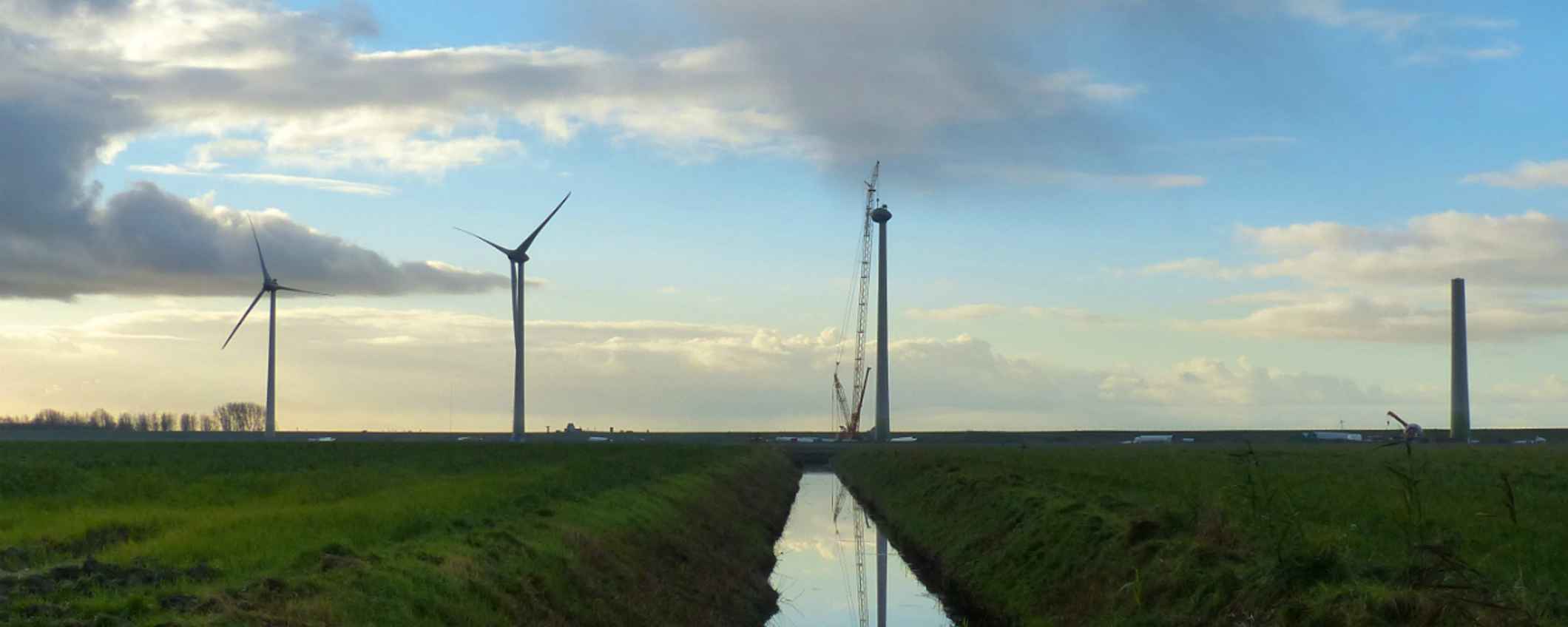Doing it ourselves
Established in 1989, Deltawind was one of the first Dutch renewable energy cooperatives. The cooperative was set up in reaction to the oil crisis of the 1970s, the report from the Club of Rome, and the Chernobyl nuclear power plant disaster in 1986. The combination of these events convinced the island's population that it would be better for them to generate their own power in a sustainable manner.
Battenoert was constructed in the mid-1990s and is the cooperative’s first wind farm. A few years ago, the original seven small wind turbines were replaced by four modern turbines. Together, they supply power to half of the island’s 22,000 households. The wind farm was built with funding from Triodos Groenfonds.
If we are to achieve the goals of the Paris climate agreement, large-scale wind power generation is essential.
Monique Sweep has been Deltawind's managing director since 2009. “I am a huge advocate of the cooperative model", she says. "The construction of wind turbines has a significant impact on people’s living environment. It is therefore easy to see why the local population might want a large say in the decision-making process. That is exactly what you achieve with a cooperative. It is for the local residents." Deltawind currently has 2,500 members. They are all private individuals who have each lent up to EUR 5,000 to the cooperative. Sweep: “They are part owners of the sustainable solutions for the future.”
Large-scale wind power
Sweep: “If we are to achieve the goals of the Paris climate agreement, large-scale wind power generation is essential. Wind power is currently the most efficient and affordable form of renewable energy. We do, of course, also have to invest in other forms of renewable power generation, such as solar power. But the opportunities are limited, especially in a small country such as the Netherlands. Five years ago, our company built a solar farm that covers an area the size of four football pitches. This facility supplies less than 10% of the power that one single modern wind turbine delivers.”
Spoiling the view
Wind power also has significant drawbacks, however. “The biggest problem is the visibility of wind turbines”, says Sweep. “Wind turbines can be seen many miles away. They dominate the landscape. This visibility creates big challenges for us. This is precisely why it is important that wind farms are realised in cooperation with the local residents. If you don’t do that and, as a power generator, you build wind turbines somewhere without the involvement of the local residents, you create your own opposition.”

Deltawind on the island of Goeree-Overflakkee was established in 1989 and is now one of the largest renewable energy cooperatives in the Netherlands. Deltawind owns two wind farms on the island of Goeree-Overflakkee, in the province of zuid-Holland, and is part owner of Windpark Krammer, in the neighbouring province of Zeeland. The latter wind farm is currently being constructed in conjunction with sister cooperative Zeeuwind. The cooperative has 2,500 members, mainly private individuals who live on the island of Goeree-Overflakkee.
This case study is based on an interview with Deltawind director Monique Sweep. The interview was published (in Dutch) in the May 2018 issue of De Kleur van Geld.
Explore our impact report ‘Accelerating the energy transition’ to find out more about our role as investor in the energy transition and system transformation. The report presents our 2019 results in a context of numbers and stories and showcases our mission to make money work for positive change.

